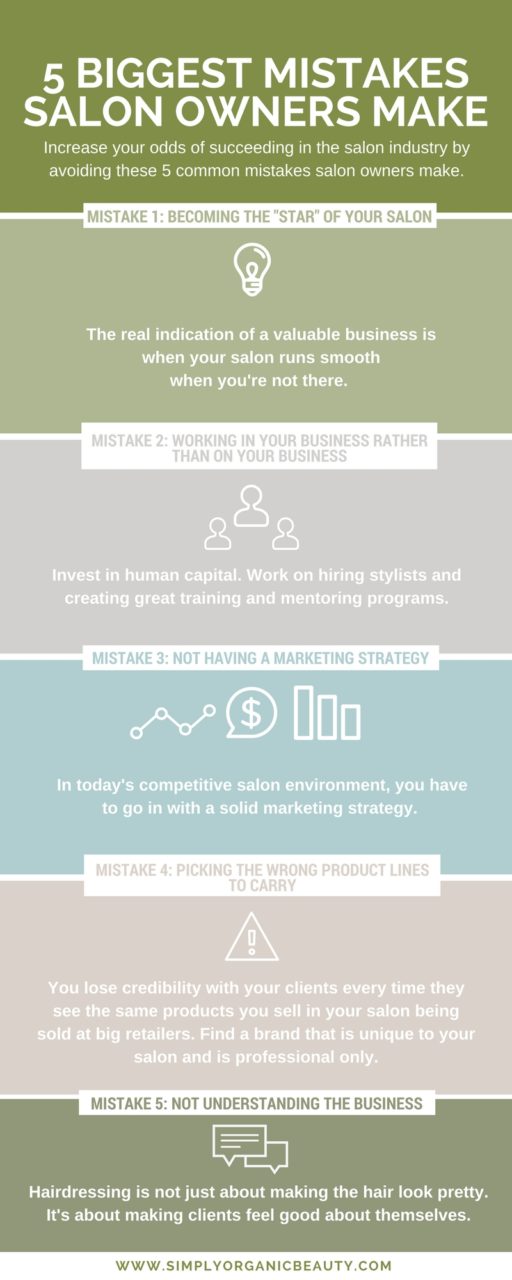Discover how to skyrocket your salon business with these 5 unconventional tactics that outshine your competitors.

Image courtesy of Andrea Piacquadio via Pexels
Table of Contents
The beauty industry is flourishing, with salon owners vying for the spotlight among fierce competition. To stand out and achieve long-term success, salon owners must develop a winning marketing strategy that targets their audience effectively. In this blog post, we will explore the crucial steps to creating a robust marketing strategy that will help salon owners thrive in the competitive beauty industry.
Understanding Salon Marketing in Today’s Landscape
The beauty industry is constantly evolving, driven by changing consumer preferences and technological advancements. To succeed, salon owners must embrace effective marketing techniques to stay ahead of the curve.
In today’s digital world, salon owners face the challenge of reaching their target audience in a cluttered online space. Traditional methods of advertising are no longer sufficient. Therefore, salon owners must adopt a customer-centric marketing approach to build long-lasting relationships with their clientele.
Establishing Clear Goals and Objectives
A critical first step in developing a winning marketing strategy is setting clear goals and objectives. Salon owners must define what they aim to achieve, ensuring their goals are specific, measurable, attainable, relevant, and time-bound (SMART).
Understanding the target audience is vital in crafting marketing goals. Salon owners must identify their ideal customers, conduct market segmentation, and define their unique selling propositions (USPs). This knowledge allows salon owners to tailor their marketing efforts to attract and retain their desired customer base.
Crafting a Powerful Brand Identity
In a competitive industry like the beauty sector, a strong brand identity plays a pivotal role in attracting customers and differentiating a salon from its competitors.

Image courtesy of www.simplyorganicbeauty.com via Google Images
Salon owners should pay attention to various elements that contribute to their brand identity. These elements include the design of the salon’s logo, the choice of colors, typography, and consistent brand messaging across all marketing channels.
Furthermore, to foster an emotional connection with customers, salon owners can leverage storytelling techniques. By sharing the salon’s unique story, values, and mission, they create a compelling narrative that resonates with their target audience.
Building an Online Presence
In today’s digital age, having a robust online presence is crucial for salon owners to reach a wider audience and attract new customers.
A professional and user-friendly website is the cornerstone of an effective online presence. Salon owners should ensure their website showcases their services, provides online booking options, and features testimonials from satisfied customers. Additionally, it’s essential to optimize the website for mobile devices to cater to the growing number of users accessing the internet through smartphones and tablets.
Moreover, social media platforms offer salon owners a valuable opportunity to engage with customers, share valuable content, and run targeted advertising campaigns. By creating engaging and visually appealing social media posts, salon owners can showcase their expertise, attract new clients, and foster customer loyalty.
Leveraging Local and Community Connections
Building strong connections within the local community can be a powerful marketing strategy for salon owners.

Image courtesy of www.linkedin.com via Google Images
Salon owners can forge partnerships with other local businesses, such as fashion boutiques or wedding planners, to cross-promote services and expand their customer base. By collaborating with complementary businesses, salon owners tap into established customer networks and increase their visibility.
Active involvement in the local community is equally crucial. Participating in local events and supporting charitable causes not only helps build brand awareness but also positions the salon as a caring and community-oriented business. Hosting educational workshops or sponsoring local beauty pageants are creative initiatives that allow salon owners to showcase their expertise and establish themselves as industry leaders in the community.
Measuring and Adapting the Marketing Strategy
Measuring the effectiveness of marketing efforts is crucial for salon owners to evaluate their strategies, identify areas of improvement, and make data-driven decisions.
Salon owners should track key performance indicators (KPIs) such as website traffic, conversion rates, customer acquisition costs, and customer retention rates. By monitoring these metrics, salon owners gain valuable insights into the success of their marketing campaigns and can modify their strategies accordingly.
Utilizing marketing analytics tools can simplify the tracking and analysis process. These tools provide salon owners with actionable data, allowing them to measure the return on investment (ROI) of their marketing activities and optimize their efforts for maximum effectiveness.
Conclusion
In an industry as competitive as the beauty sector, developing a winning marketing strategy is paramount for salon owners seeking long-term success. By understanding the dynamics of salon marketing, setting clear goals, crafting a powerful brand identity, building an online presence, leveraging local connections, and measuring the effectiveness of marketing efforts, salon owners can dominate the competition and thrive in the ever-evolving beauty industry.